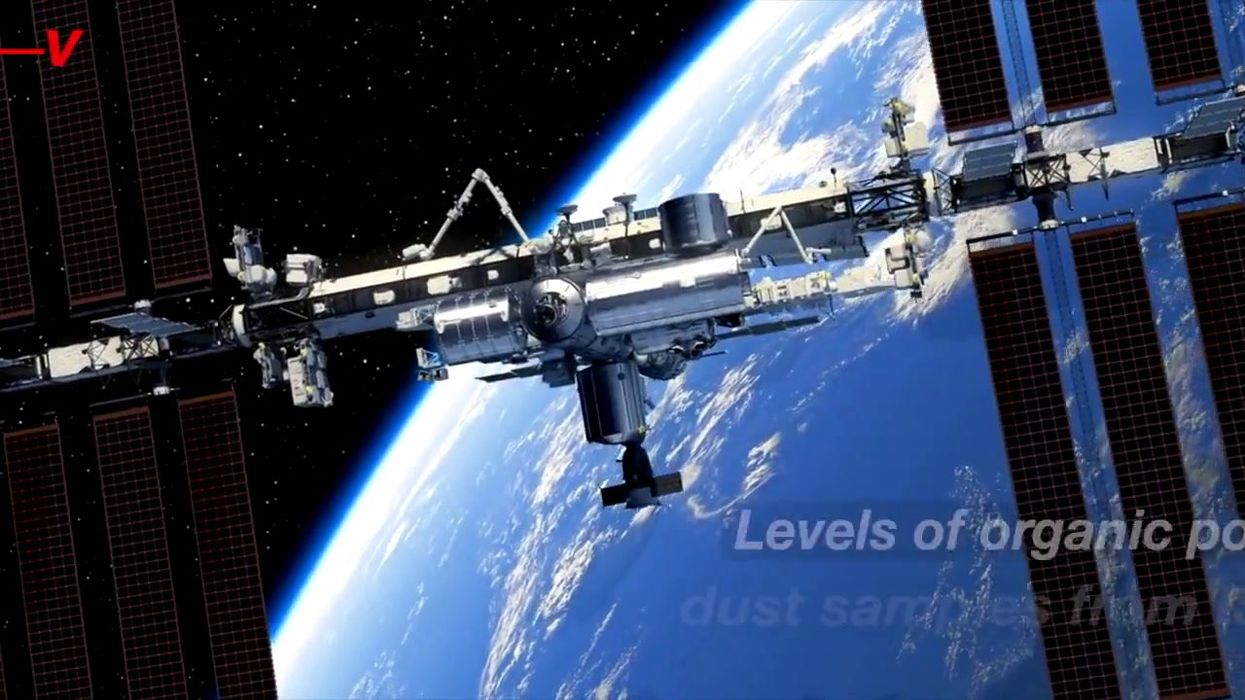Catherine Shuttleworth
Sep 27, 2023
The International Space Station May Be More Polluted than the Average American …
ZMG - Veuer / VideoElephant
Astronauts have never truly been alone.
In 1988, on board the Russian space station Mir, the crew noticed something had blanketed one of their windows – from the outside. Whatever it was had even begun to infiltrate its way into the station, slowly destroying the window's titanium-quartz surface.
The blanket was eventually revealed to be fungi that had managed to hitch a ride into space by clinging onto the astronauts themselves, Space.comreports.
Amazingly, the fungi had managed to adapt to the space environment, surviving and thriving on windows, control panels, and air conditioners.
The on board the space station even had their food and water contaminated. Although this was the first instance of a hijacker damaging the space station, it wasn't the last.
Many space-borne fungi remain dormant during launch, until "activating" and reproducing to form thick, living mats on various regions in the space station. The fungi can threaten the health of those on board as well as damage electronics and plumbing.
Since the 1988 incident, there have been numerous attempts to establish robust cleaning routines for scrubbing the fungi off walls and equipment, in an attempt to prevent the organisms from causing serious issues.
Despite the concern surrounding the risks, scientists are trying to take advantage of the fungi's abilities.
One team associated with the European Space Agency (ESA) recently conducted hypergravity experiments on fungi to better understand how these organisms survive effortlessly in the harsh environment of space.
If these mechanisms are understood, fungi may be able to be used to build off-world settlements and be incorporated into off-world medications.
In 2016, researchers at NASA's Jet Propulsion Laboratory in California launched fungi into space for the first time on board the International Space Station. The team studied how the ISS environment caused the species to create certain molecules it doesn't produce on Earth.
"We are never going to be able to get rid of fungi entirely as we venture into space, so we need to understand them," André Antunes, a researcher who is part of the recent ESA study, said in a statement published on Monday.
In addition, they offer positive opportunities as well as risks.
Down on Earth fungi are employed to make food - such as yeast for fermentation - as well as medicines, chemical enzymes for industry as well as metal nanoparticles used in numerous fields.
Sign up to our free Indy100 weekly newsletter
Have your say in our news democracy. Click the upvote icon at the top of the page to help raise this article through the indy100 rankings.
Top 100
The Conversation (0)














